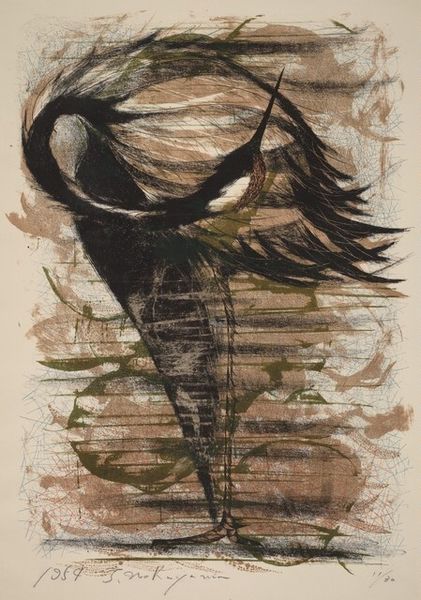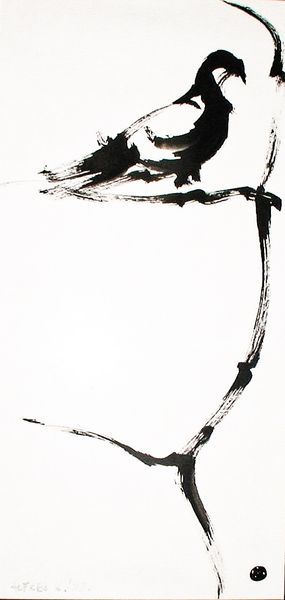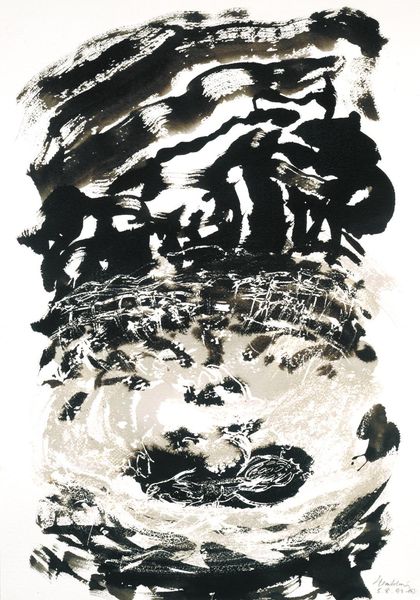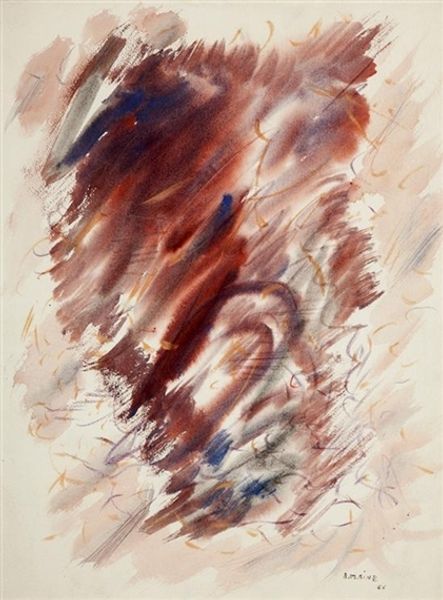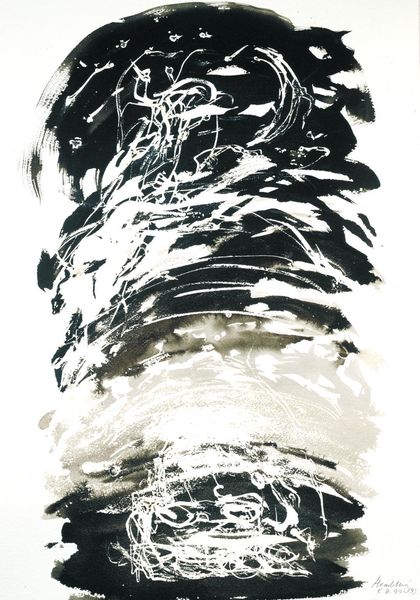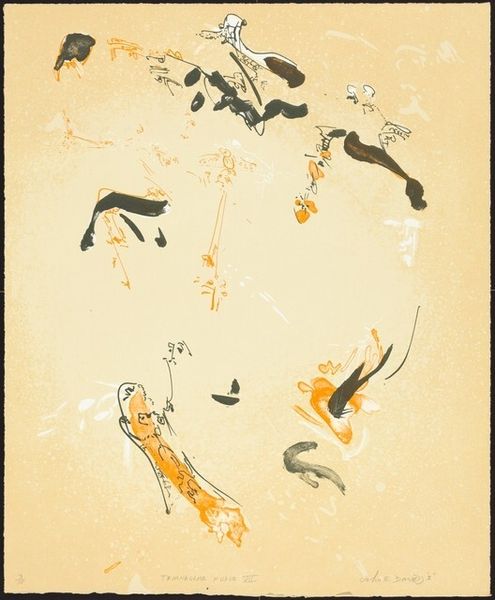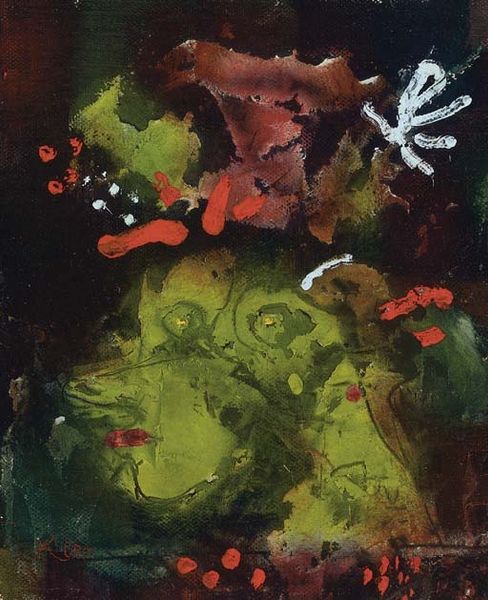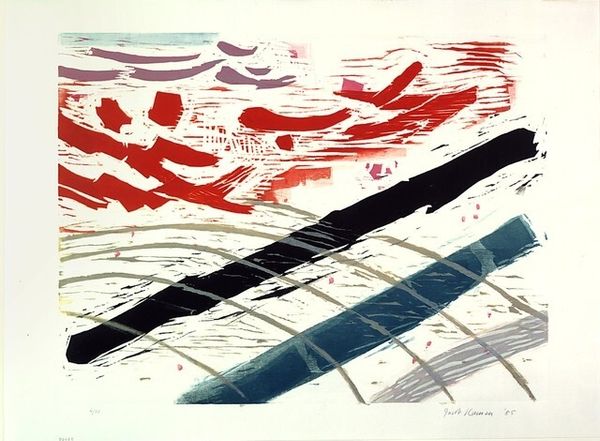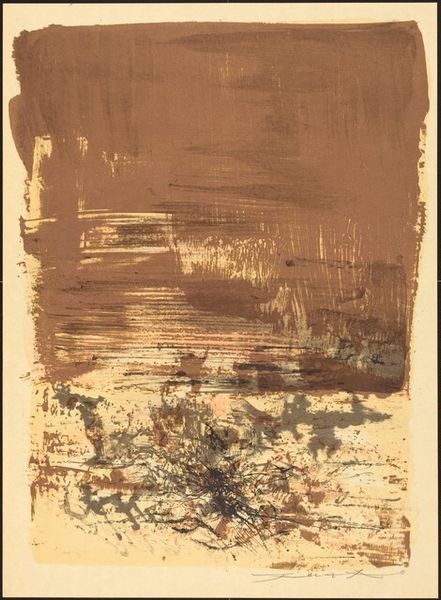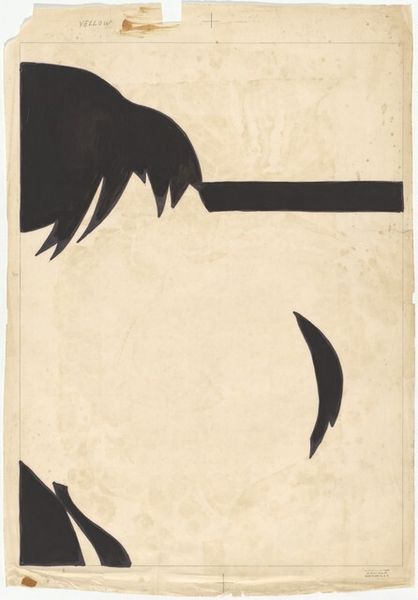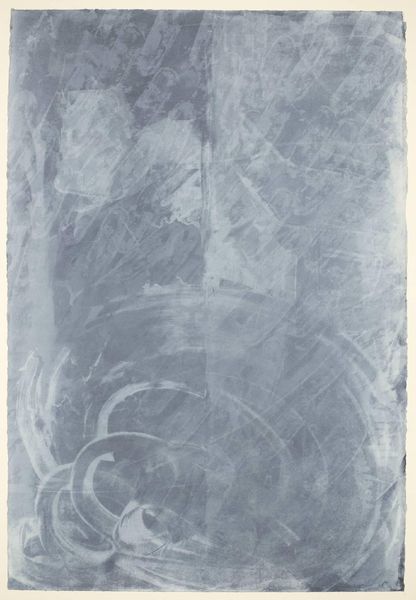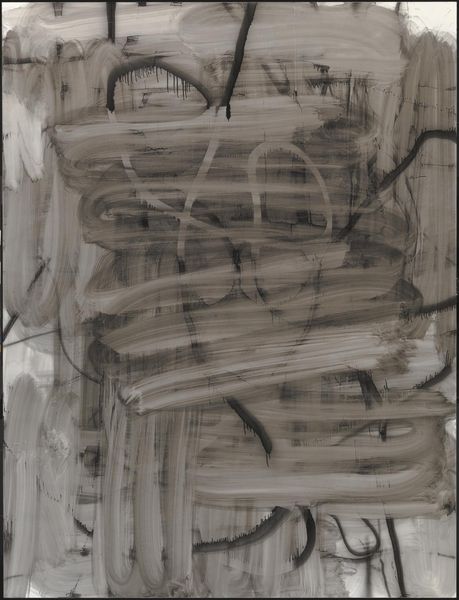
Copyright: National Gallery of Art: CC0 1.0
Curator: This print is titled "Crane in Flight," created in 1957 by Tadashi Nakayama. The medium is etching, and I’m particularly drawn to the blend of figuration and abstraction within its design. Editor: My immediate impression is of movement. The blurring effect and the horizontal lines really evoke a sense of speed. It's like watching the landscape streak by from a train window, with a bird caught in the frame. Curator: The crane is a powerful symbol, particularly in Japanese culture, representing longevity and good fortune. The dynamic lines add a modern tension to the classical symbolism. The floating circles also strike me as culturally meaningful symbols representing, perhaps, an ancient Shinto presence in the landscape. Editor: I find myself considering the materials and methods used to create such blurring effect. It seems almost contradictory - a traditional etching employed to give a fleeting contemporary sense of motion and flight. Curator: Precisely! Nakayama merges traditional ukiyo-e themes with modern abstraction. Consider the deliberate use of line—the crane itself, but also those striated marks across the background – all achieved through the etching process, a testament to skill and craftsmanship. Editor: It makes me think about the social context. The post-war era, this embrace of abstraction but still clinging to cultural emblems, and how printmaking would allow accessibility of the design. I imagine a striving toward modernity tempered by a longing for tradition, reflected in every stroke of the etching needle. Curator: It’s fascinating how Nakayama plays with these tensions, inviting us to reflect on the complex relationship between progress and memory, the symbolic crane soaring above the abstract land. It certainly brings that into the viewing experience and emotional connection to place. Editor: Exactly. And I think focusing on those processes reveals how such emotions get constructed – not just felt or depicted, but materially made. I appreciate how the constraints of printmaking and etching force very clear compositional and narrative decisions by the artist. Curator: It’s a reminder that the most potent art often lies at the intersection of cultural memory and material execution. Editor: Indeed, "Crane in Flight" becomes more than a simple image of a bird; it is an examination of what modernity represents in traditional contexts.
Comments
No comments
Be the first to comment and join the conversation on the ultimate creative platform.
